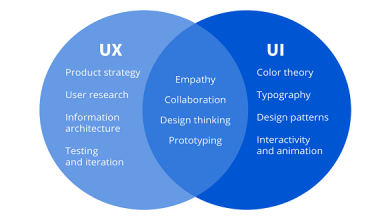5 Ways to Combine Lean Thinking with PRINCE2 Principles for Optimised Project Outcomes

Project success has been proven by two methodologies: PRINCE2 (Projects in Controlled Environments) and lean thinking. The project management methodology of PRINCE2 offers an organised approach, whereas lean thinking prioritises productivity and waste minimisation. By combining these strategies, project outcomes may be optimised, and timely and cost-effective project delivery can be guaranteed. To maximise project outcomes, we’ll look at some information regarding PRINCE2 Certification along with five strategies to combine lean thinking with PRINCE2 Principles in this blog post.
Table of Contents
- Understanding PRINCE2 Principles
- 5 ways to combine PRINCE2 principles and lean thinking
- Starting with clear objectives
- Continuous Improvement
- Customer Focus
- Managing by Stages
- Learning from Experience
- Embracing Lean Thinking in Project Management
- Case Study: PRINCE2 Certification and Lean Thinking in Action
- Conclusion
Understanding PRINCE2 Principles
The well-known process-driven project management technique PRINCE2 concentrates on breaking down projects into manageable phases. PRINCE2 is based on seven fundamental concepts.
Sustained Business Justification
Ensure a project is viable and stays on course with the company’s goals at every stage.
Learn from Experience
Consistently review previous projects to find lessons learned and incorporate them into current ones.
Defined Roles and Duties
Clearly outline each team member’s tasks and duties to encourage efficient communication and accountability.
Management by Stages
To improve control and decision-making, break the project into phases, each with specific goals and points of control.
Manage by Exception
Give project managers the authority to address higher-level problems only when deviations go beyond acceptable bounds.
Concentrate on Products
Clearly define the project’s deliverables and intended results to guarantee that they are in line with stakeholder expectations.
Tailor to Fit the Project Environment
Adapt the PRINCE2 framework to each project’s particular requirements and features.
5 ways to combine PRINCE2 Principles and Lean Thinking
Lean thinking combined with PRINCE2 principles can produce a project management methodology that excels in efficiency and structure. To create this synergy, try these five methods:
Starting with clear objectives
Integrate the “Identity Value” principle from Lean Thinking into PRINCE2 by ensuring project goals are clear and aligned with stakeholders’ expectations. Because of this clarity, scope creep is avoided, and every project activity directly contributes to value delivery.
Continuous Improvement
Use the “Seek Perfection” principle of lean thinking to help your project teams adopt a continual improvement mindset. To find areas for improvement and waste reduction, promote frequent lessons learned sessions and retrospectives in accordance with PRINCE2 principles.
Customer Focus
Customer satisfaction is emphasised by PRINCE2 and lean thinking. You can make sure that your initiatives are genuinely customer-centric by coordinating project outputs with customer expectations and routinely requesting feedback.
Managing by Stages
The “Create Flow” idea of lean thinking and the PRINCE2 philosophy of “Managing by Stages” complement each other nicely. Projects can be divided into manageable phases to help you find bottlenecks and streamline workflow, reducing delays and boosting productivity.
Learning from Experience
PRINCE2’s “Learn from Experience” principle is enhanced by Lean Thinking’s focus on experience-based learning. With repeated examination and application of lessons learned, your projects gain flexibility and efficiency.
Embracing Lean Thinking in Project Management
On the other hand, the foundation of lean thinking is the idea of minimising waste and maximising value. Toyota first created lean concepts, which have subsequently spread to many different industries. Five fundamental ideas can be used to sum up lean thinking:
- Identify value
Recognise your customers’ values and concentrate on providing them with them while cutting out any actions that do not advance that goal.
- Map the value stream
To spot inefficiencies and bottlenecks, visualise the complete process.
- Create flow
Make sure that work progresses seamlessly from one stage to the next by streamlining the process and reducing pauses and interruptions.
- Establish Pull
To prevent overproduction and reduce surplus inventory, match work activities or production to customer demand.
- Seek Perfection
Always work to reduce waste and enhance procedures to reach the greatest possible level of effectiveness and quality.
Case Study: Implementing Lean Thinking and Earning PRINCE2 Certification
Here is an example of how Toyota used Lean Thinking to improve its business processes.
Company: Toyota Motor Corporation
Industry: Automotive
Challenge: Toyota was facing increasing competition from other car manufacturers. They needed to find ways to reduce costs and improve efficiency in order to remain competitive.
Solution: Toyota implemented lean thinking principles throughout their organisation. They started by identifying and eliminating waste in their manufacturing process. They also implemented Kaizen, a continuous improvement process, to make small changes that would lead to big results.
Here are some of the specific steps that Toyota took to implement lean thinking:
- They created a value stream map, which visually represents the steps involved in creating a product or service. This helped them to identify waste and inefficiencies in the process.
- They implemented 5S, which is a Japanese methodology for organising and cleaning the workplace. This helped to improve efficiency and safety.
- They implemented Kanban, which is a system for controlling the flow of work. This helped to prevent overproduction and waste.
- They implemented Kaizen, which is a continuous improvement process. This helped them to make small changes that would lead to big results.
Results: Toyota’s implementation of lean thinking was a success. They reduced costs by 30% and improved efficiency by 50%. They also earned the PRINCE2 certification, an internationally recognised project management framework.
Final Thoughts
Project outcomes can be optimised by implementing lean thinking concepts into PRINCE2 project management. A project management strategy can be developed that can blend efficiency and structure by setting clear goals at the outset, accepting continual improvement, giving priority to customer attention, managing in phases, and learning from past mistakes. This association guarantees that projects not only meet deadlines but also maximise value for all parties involved. Obtaining PRINCE2 certification is a valuable step towards learning these principles and achieving project success for individuals wishing to improve their project management abilities. Read also: https://bestbusinesstimes.com/
Project outcomes can be optimised by implementing lean thinking concepts into PRINCE2 project management. A project management strategy can be developed that can blend efficiency and structure by setting clear goals at the outset, accepting continual improvement, giving priority to customer attention, managing in phases, and learning from past mistakes. This association guarantees that projects not only meet deadlines but also maximise value for all parties involved. Obtaining PRINCE2 certification is a valuable step towards learning these principles and achieving project success for individuals wishing to improve their project management abilities.
Not only are Snapseed QR codes convenient, but they also promote collaboration and creativity. You can easily exchange editing tips and techniques with your friends and fellow photographers, leading to endless possibilities for artistic expression.



